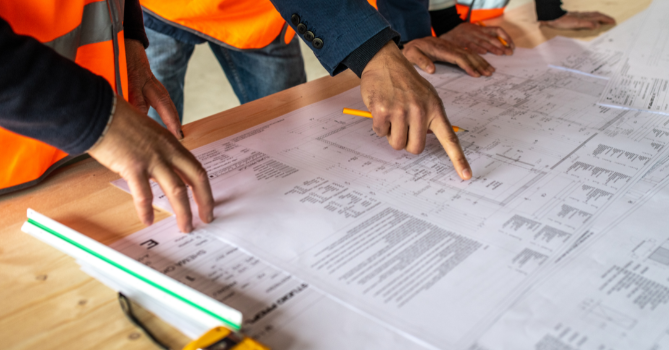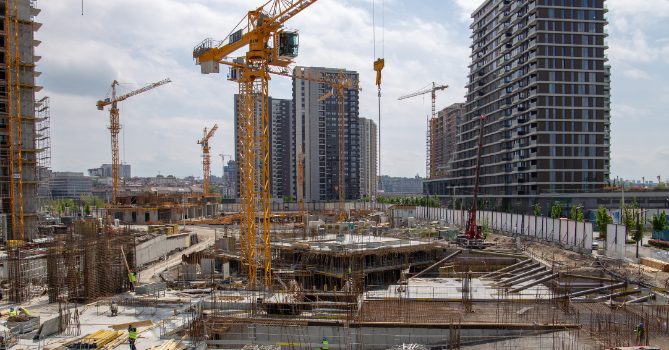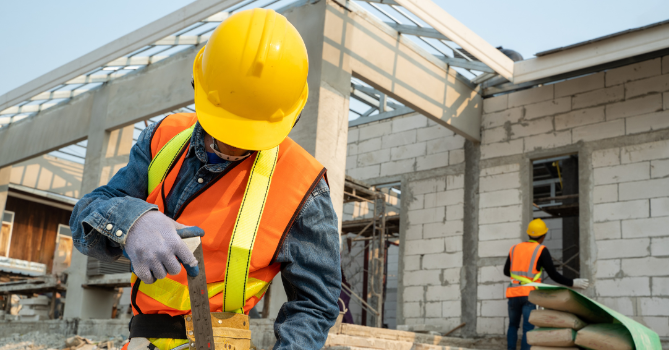
A Guide to Smooth Project Completion
In any construction project, following a structured process is key to success. Each stage in the construction project stages plays a role in keeping the project on track and within budget. By organizing each phase, from pre-construction planning to the post-construction phase, teams can reduce errors, save time, and control costs. This guide walks you through the main stages, showing how each step—planning, designing, procuring materials, constructing, and wrapping up—helps streamline complex projects. Whether you’re handling large-scale construction or a smaller build, understanding these phases of construction projects provides a roadmap for success. Let’s break down these stages to see how they keep projects moving efficiently from start to finish.
Stage 1: Pre-Design (Project Initiation)
The pre-design stage, often called project initiation, is where construction planning truly begins. In this phase, the focus is on understanding what the client needs and assessing if the project is feasible. This involves a project needs assessment, where details like the desired space, location, budget, and timeline are discussed. By gathering these specifics early on, teams can define the project scope and avoid unexpected changes down the line.
Feasibility analysis is also key here. It examines whether the project can realistically be completed within the given parameters, such as budget and available resources. This stage saves time and money by clarifying the project’s vision before moving forward. Professional insights from architects, engineers, and other experts ensure that the project is not only viable but also planned according to industry best practices. The construction planning phase sets the foundation, helping everyone involved start on the same page and work toward a clear, achievable goal.
Stage 2: Design (Pre-Construction)
The design stage, or pre-construction phase, transforms ideas into concrete plans. In this phase, architects and designers work closely with clients to create detailed blueprints that outline every aspect of the project, from layout to materials. These blueprints, also known as schematics, are essential because they give everyone a visual guide on how the finished structure will look and function. This stage is where the project vision becomes real, with practical designs that balance beauty, usability, and safety.
Architects and designers also focus on making sure these plans meet all local building codes and regulations. Following these standards not only ensures legal compliance but also guarantees that the building will be safe and durable. Design documentation is critical here, as it helps keep construction teams aligned and minimizes errors during the build.
The design phase isn’t just about appearance; it’s about creating a structure that’s efficient and functional. Proper planning here reduces the need for costly changes later and ensures that the project aligns with the client’s needs. By setting a clear, documented path forward, the design stage serves as a roadmap, helping builders follow industry standards and complete construction smoothly and efficiently.

Stage 3: Procurement
The procurement stage is all about gathering the essential materials, labor, and equipment needed to bring the project to life. In this phase, project managers work on sourcing everything required, from raw materials to skilled subcontractors. Careful selection of these resources ensures that both quality standards and budget goals are met.
Aligning materials and subcontractors is crucial for maintaining a steady workflow. Delays in one area, like material delivery, can impact the entire project timeline. Strategic procurement planning helps avoid these issues by securing resources in advance and coordinating schedules to keep things moving smoothly. This stage also emphasizes the importance of cost control; by carefully choosing vendors and negotiating prices, the team can keep the project on budget.
Market conditions, like fluctuations in material costs or labor shortages, can greatly affect procurement. Understanding these factors and planning for potential shifts is essential to avoid disruptions. In this way, the procurement stage isn’t just about buying what’s needed; it’s about smart planning to minimize risks and ensure the project stays on track.
Stage 4: Construction and Monitoring
The construction and monitoring stage is where all planning and preparation turn into action. This phase begins with site preparation, ensuring the location is ready for building. Workers clear the land, set up essential utilities, and start the foundational work. This foundation work is vital, as it supports the entire structure, making stability and precision critical. Quality control measures are introduced from the very start to guarantee every part of the build aligns with set standards.
Daily progress reports and on-site inspections are essential tools in this phase. Supervisors track each day’s work, ensuring that every task is completed according to the project plan. These inspections help spot issues early, allowing the team to make quick adjustments before they become costly problems. Constant progress tracking also ensures the project adheres to its timeline and stays within budget.
Monitoring is at the heart of maintaining construction quality and safety. Industry standards require consistent checks to confirm that all work follows building codes and safety regulations. This is especially crucial in large projects, where compliance is tied to both quality and worker safety. By monitoring everything from materials to labor practices, teams can maintain construction standards, reduce delays, and prevent budget overruns.
Ultimately, this stage is about transforming plans into a physical structure while maintaining the highest levels of quality and safety. Through diligent monitoring and adherence to industry practices, the construction and monitoring stage ensures that the project progresses smoothly, setting the groundwork for a successful, compliant, and high-quality build.

Stage 5: Post-Construction (Closeout)
The post-construction stage, or closeout phase, is the final step in the project’s journey. Here, teams conduct final inspections, ensuring that every detail aligns with the original plans and meets quality standards. A punch list is created to address any minor issues or touch-ups needed before the project is fully complete. Once these items are resolved, the project is ready for handover.
At this stage, securing warranties and verifying all work is essential. Warranties provide peace of mind to the client, ensuring that any issues within the warranty period will be handled. Additionally, teams often train the client on operating building systems, such as HVAC, electrical, and plumbing, so they can manage and maintain the property effectively.
A thorough closeout process helps ensure client satisfaction and a smooth project wrap-up. Following industry standards for inspections and quality checks guarantees that the finished structure meets all expectations and regulatory requirements. By focusing on these final details, the post-construction phase reinforces the project’s success, leaving both the team and the client confident in the completed work.

Each stage of the construction process plays a critical role in ensuring a successful, well-executed project. From initial pre-construction planning to final closeout, each phase builds on the last, creating a smooth and efficient workflow. Diligent planning, thorough design, careful procurement, active monitoring, and a complete closeout make the difference between a project that meets expectations and one that surpasses them. Every step requires focus and attention, ensuring that the project stays on track, within budget, and up to standard. By following this structured approach, teams can handle complexities with confidence, delivering quality results that satisfy clients and set the stage for future success.